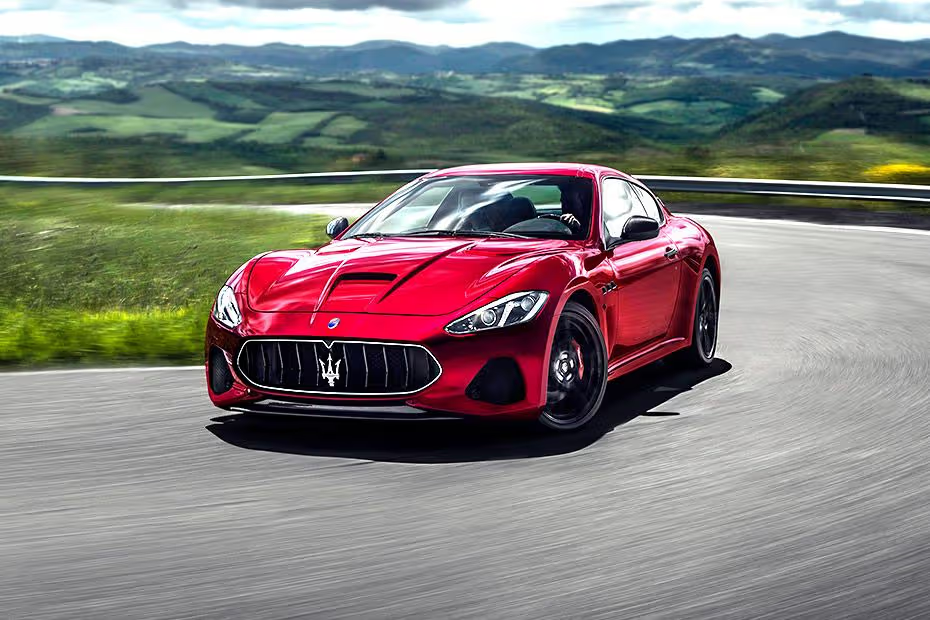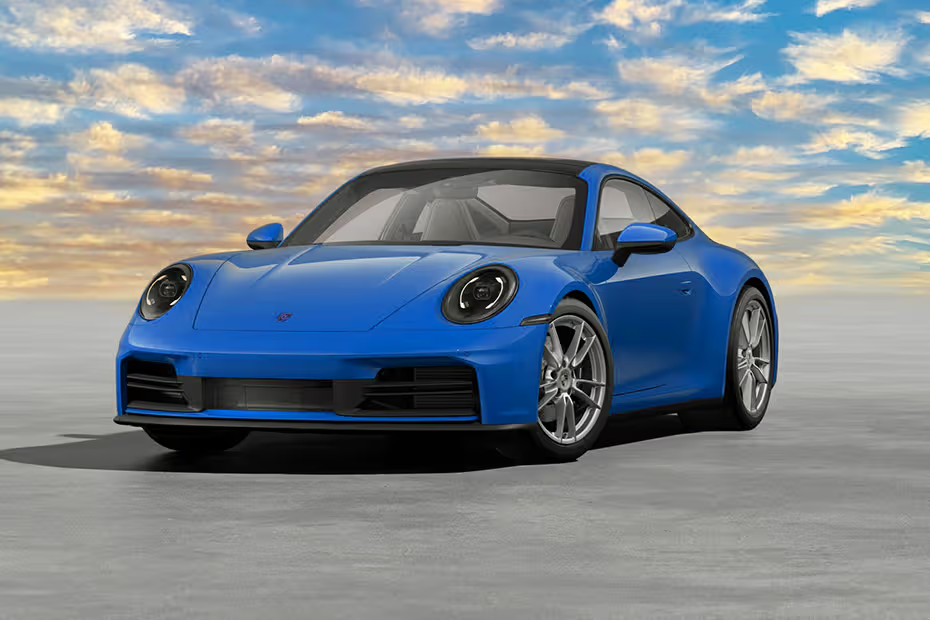Toyota Supra MK5 – If you’ve ever dreamed of sliding into a sports car that turns heads, hugs corners like a pro, and still handles your daily commute without breaking a sweat, the 2025 Toyota Supra MK5 might just be your perfect match. This fifth-generation icon isn’t just a throwback to the glory days of the ’90s Supra—it’s a modern masterpiece born from a surprising team-up between Toyota and BMW. With its turbocharged growl, razor-sharp handling, and a price tag that doesn’t require selling your soul, the Toyota Supra MK5 blends heart-pounding performance with real-world usability.
Launched in 2019 after a 20-year hiatus, the Toyota Supra MK5 has evolved into one of the most exciting rides in the sports car segment. Whether you’re a gearhead chasing track days or someone craving a fun upgrade from your family sedan, this guide dives deep into everything you need to know about the 2025 model. From its sleek design and beastly engine to tech-packed interiors and long-term ownership costs, we’ll break it all down in plain English. Ready to discover why the Supra is stealing the show in 2025? Let’s rev up.
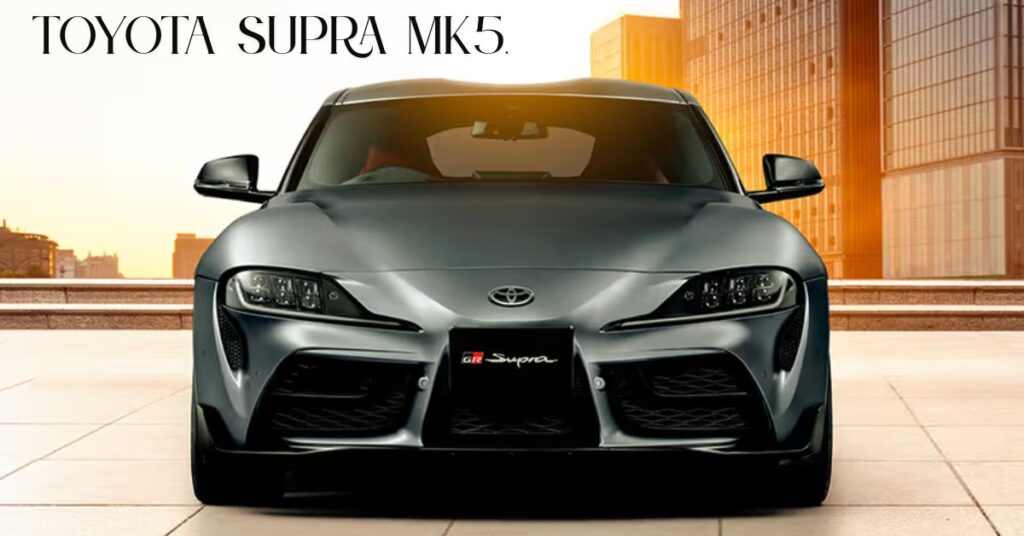
The Storied History of the Toyota Supra: From JDM Hero to Global Revival
The Supra name isn’t new—it’s a badge of honor in car culture. Toyota first rolled out the Supra in 1978 as a luxury coupe based on the Celica platform. But it was the fourth generation (MK4, 1993-2002) that cemented its legend, thanks to that iconic 2JZ engine that tuners still worship today. Fast-forward to the mid-2010s, and fans were clamoring for a comeback. Toyota listened, but they didn’t go it alone.
Enter the BMW collaboration, announced in 2018. This wasn’t just a parts swap—it was a full-on partnership. Toyota’s Gazoo Racing (GR) division handled the Supra’s development, while BMW shared its chassis, engine tech, and even the convertible Z4 platform. The result? The MK5 Supra debuted at the 2018 Geneva Motor Show, hitting U.S. roads in 2019. Critics praised its balance of Japanese reliability and German precision, but purists grumbled about the BMW bits under the skin.
By 2025, theToyota Supra MK5 has matured. Toyota has tweaked the formula with better suspension tuning, a manual transmission option, and subtle aero upgrades. Rumors swirl about the partnership winding down for a fully Toyota-built next-gen model around 2027, possibly with hybrid power. For now, though, the MK5 remains a testament to smart global teamwork—affordable thrills without compromising on soul.
Striking Design: Aerodynamic Art That Demands Attention
One glance at the 2025 Toyota Supra MK5, and you know it’s no ordinary coupe. Its low-slung silhouette stretches 172 inches long, with a wide stance that screams “built for speed.” The front fascia draws you in with slim LED headlights, a massive blacked-out grille (inspired by the GR brand’s rally heritage), and air vents that feed the turbo without drag. Around back, quad exhaust tips and a subtle ducktail spoiler nod to the MK4’s classic vibe, while the optional carbon-fiber roof keeps weight low for better balance.
Under the hood—er, underbody—the aero wizardry shines. Toyota engineers crafted a flat undercover panel that channels air smoothly, reducing lift and boosting stability at high speeds. It’s not just looks; this car slices through wind with a drag coefficient of just 0.30. Wheel options range from 19-inch alloys on base models to forged Michelins on Premium trims, wrapped in sticky summer rubber for grip.
Inside, the design stays driver-focused. The cockpit wraps around you like a cockpit, with Alcantara accents and red-stitched leather options. It’s compact—two seats only—but that’s the point. This isn’t a family hauler; it’s a personal rocket. At 3,400 pounds curb weight, it’s light enough to dance but sturdy for bumpy backroads.
For 2025, Toyota added the MkV Final Edition (limited run, starting at $68,550), with matte black paint, GR badges, and red brake calipers. It’s a collector’s nod to the model’s evolution, perfect if you’re eyeing resale value.
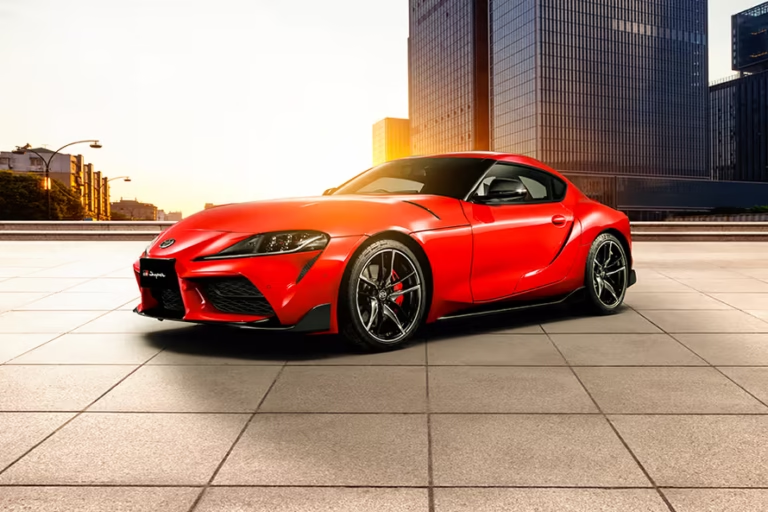
Powertrain and Performance: Turbocharged Excitement in Every Drive
What makes the Supra MK5 tick? At its core is BMW’s B58 3.0-liter twin-scroll turbo inline-six engine—a smooth operator pumping out 382 horsepower at 5,800 rpm and 368 lb-ft of torque from just 1,800 rpm. That’s enough grunt to hit 60 mph in 3.9 seconds (with launch control) and top out near 155 mph. It’s not the raw fury of a V8, but the linear surge feels addictive, like a rubber band snapping you forward.
Transmission choices keep things versatile: An eight-speed automatic with paddle shifters is standard, quick-shifting for track work. But the real hero is the new six-speed manual, available on all trims for 2025. It’s not as buttery as a Porsche, but rev-matching and a short throw make it engaging for purists. Rear-wheel drive only, of course, with an electronic limited-slip diff that doles out power precisely.
Handling? Chef’s kiss. The double-wishbone front and multi-link rear suspension, tuned by Toyota’s GR team, soaks up imperfections while carving corners. Adaptive Variable Suspension (AVS) on Premium models lets you dial in comfort or sport mode via the drive selector. Brakes are massive—13.8-inch fronts with optional Brembos—hauling the car down confidently. Fuel economy? Respectable at 21 mpg city/29 highway, sipping premium unleaded.
Owners rave about the “Supra wave”—that instant smile when you mash the throttle on an open highway. It’s fast enough for autocross wins but forgiving for newbies. Just watch the turbo lag below 2,000 rpm; it’s minimal, but a gentle foot helps.
| Performance Specs at a Glance | Base 3.0 Trim | Premium Trim |
|---|---|---|
| Horsepower | 382 hp | 382 hp |
| Torque | 368 lb-ft | 368 lb-ft |
| 0-60 mph | 4.1 sec (auto) / 4.6 sec (manual) | 3.9 sec (auto) |
| Top Speed | 155 mph | 155 mph |
| Fuel Economy (City/Hwy) | 21/29 mpg | 21/29 mpg |
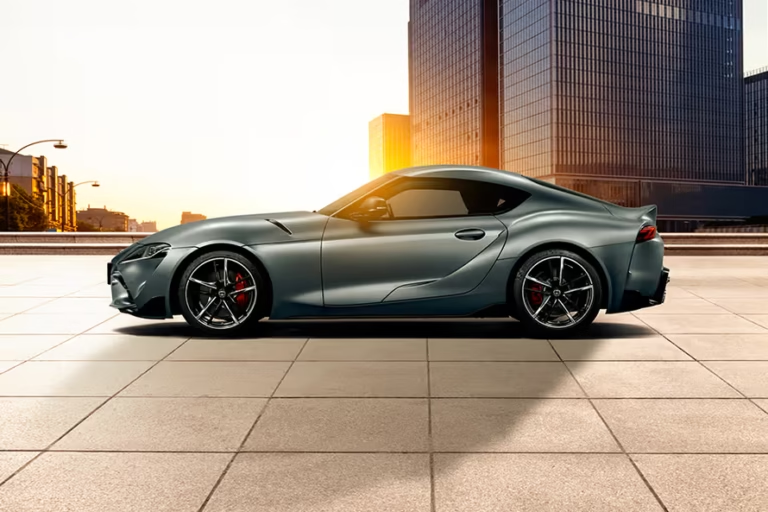
Interior Comfort and Tech: Luxury Meets Driver’s Edge
Step inside the 2025 Toyota Supra MK5, and it’s a cozy cockpit built for two. The seats are low-slung buckets with aggressive bolsters—heated and 14-way adjustable on Premium models, wrapped in leather or Alcantara. They’re supportive for long hauls, but taller folks (over 6’2″) might feel the headroom pinch. Trunk space? A modest 10.2 cubic feet, enough for weekend bags but not grocery runs.
Tech is where the Supra shines without overwhelming. The 8.8-inch touchscreen runs Toyota’s latest infotainment, with wireless Apple CarPlay and Android Auto. Voice commands work smoothly, and the optional 12-speaker JBL system (500 watts) turns your playlist into a concert. Climate control is dual-zone auto, and a head-up display projects speed and nav right onto the windshield.
Unique touches? The Supra Command dial on the steering wheel—a knurled knob for quick menu scrolling—feels premium and intuitive. Ambient lighting in blue or red sets the mood, and wireless charging keeps your phone juiced. It’s not as gadget-heavy as a Tesla, but everything prioritizes the drive. Drawback: The small rear window can make parking tricky, so cameras help.
For families or couples, it’s intimate; for solo drives, it’s paradise.
Safety and Driver Assistance: Toyota’s Reliability Shines Through
Toyota doesn’t skimp on safety in the Supra MK5. Standard Toyota Safety Sense 3.0 includes pre-collision braking with pedestrian detection, lane departure alerts, and adaptive cruise control. The blind-spot monitor with rear cross-traffic alert is a lifesaver in tight urban spots, and automatic high beams keep night drives glare-free.
The structure boasts high-strength steel and aluminum for crash protection, earning top marks from IIHS and NHTSA (five stars overall). Parking aids like front/rear sensors and a 360-degree camera make maneuvering this low-slung beast easier. Optional dynamic radar cruise even works in curves, blending seamlessly with the car’s sporty nature.
In real-world tests, the Supra’s stability control is tunable—off for track fun, on for rainy commutes. It’s not the most feature-stuffed, but it’s effective without nagging.
Trims, Pricing, and Value: Which Supra Fits Your Budget?
The 2025 lineup keeps it simple: Two main trims, plus the limited Final Edition.
- 3.0 Trim ($57,445 MSRP): The entry point. Gets the full 382-hp engine, 19-inch wheels, leather seats, and the full safety suite. Add the manual for $500. It’s the value king—plenty of wow without extras.
- 3.0 Premium ($60,595): Steps up with AVS suspension, JBL audio, heated seats, and navigation. Big wheels and ambient lighting add flair. Worth the $3,150 bump if you crave refinement.
- MkV Final Edition ($68,550, limited): 2025’s send-off special with unique paint, embroidered seats, and performance tweaks. Only for collectors.
All include a three-year/36,000-mile warranty and complimentary first-year NASA membership for track days. Factor in destination fees ($1,135), and you’re looking at $58,500-$70,000 out the door. Compared to rivals, it’s a steal—more power per dollar than a Porsche.
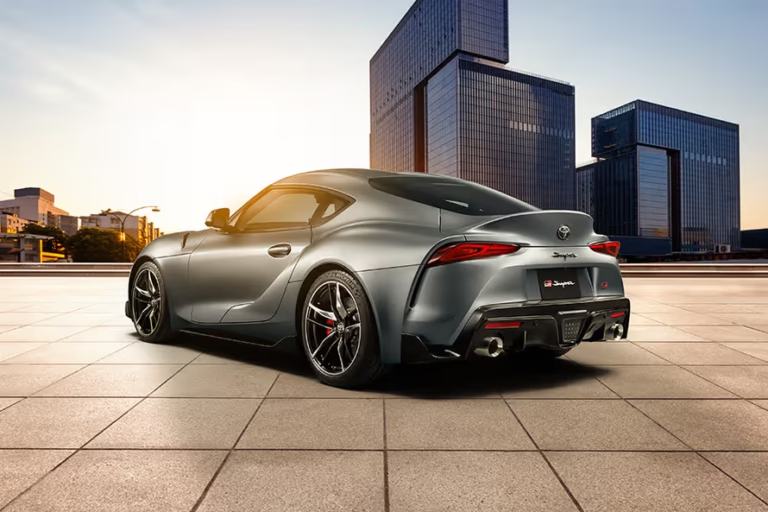
Pros and Cons: What Owners Love (and What They Don’t)
Pros:
- Explosive acceleration and precise handling.
- Eye-catching design that ages gracefully.
- Surprisingly practical as a daily driver.
- Low ownership costs for a sports car.
- Manual option adds purist appeal.
Cons:
- Limited rear visibility and space.
- Turbo lag in low-speed traffic.
- BMW-sourced parts can mean pricier repairs at non-Toyota shops.
- No hybrid or AWD for all-weather versatility.
- Infotainment feels dated next to rivals.
From owner forums, the highs outweigh the lows—many log 20,000+ miles annually with zero regrets.
Head-to-Head: Toyota Supra MK5 vs. Top Competitors
The Supra doesn’t stand alone in the two-seater arena. Here’s how it stacks up.
Vs. BMW Z4 M40i ($66,500): Its platform twin, but convertible-only. Same engine, but the Z4’s softer ride suits top-down cruises. Supra wins on price and coupe rigidity for track work.
Vs. Porsche 718 Cayman ($70,000 base): Porsche’s mid-engine magic delivers neutral balance and that legendary PDK transmission. It’s the handling champ, but thirstier on gas and double the maintenance cost. Supra’s better for budgets.
Vs. BMW M2 ($64,200): More doors, more practicality, and a snarling twin-turbo six. M2 edges in raw fun, but Supra’s lighter weight and Toyota tuning make it nimbler on twists.
In group tests, the Supra often ties for “best bang-for-buck,” blending accessibility with adrenaline.
Real Owner Experiences: Reliability, Maintenance, and Daily Life
Don’t just take our word—owners swear by the MK5’s dependability. One high-mileage driver hit 61,000 miles in three years with only routine oil changes and tire swaps. “It’s as reliable as my old Camry, but way more exciting,” they shared online.
Maintenance? Toyota covers the first two years/25,000 miles free. Beyond that, expect $500-800 annually for services like brakes or fluids. Over 10 years, total costs hover around $4,950—cheapest in its class, per data crunchers. Parts are BMW-priced (e.g., $1,200 for rotors), but Toyota dealers handle most without fuss. Fuel? $2,500 yearly at average miles.
Common gripes: Tight cabin for car seats (not ideal for parents) and winter traction (summer tires slip). But for sunny climates, it’s a dream daily. Forums buzz with mods like intakes for that deeper growl, but stock reliability shines.
Looking Ahead: The Future of the Supra MK5 and Why Buy Now
As 2025 rolls on, the Toyota Supra MK5 cements its spot as a modern classic. With the BMW tie-up potentially ending, whispers of a 400-hp hybrid successor in 2027 have fans buzzing. Electric Supras? Maybe, but Toyota’s hybrid expertise could make it a green powerhouse.
Why grab one now? Values hold strong—early MK5s fetch premiums—and incentives like 0% financing sweeten deals. It’s not just a car; it’s a statement. Affordable performance, Toyota toughness, and that unmistakable snarl.
In a world of crossovers, the 2025 Toyota Supra MK5 reminds us why we fell in love with driving. Whether blasting down Pacific Coast Highway or commuting in style, it delivers joy per mile. Test drive one today—your inner speed demon will thank you.

